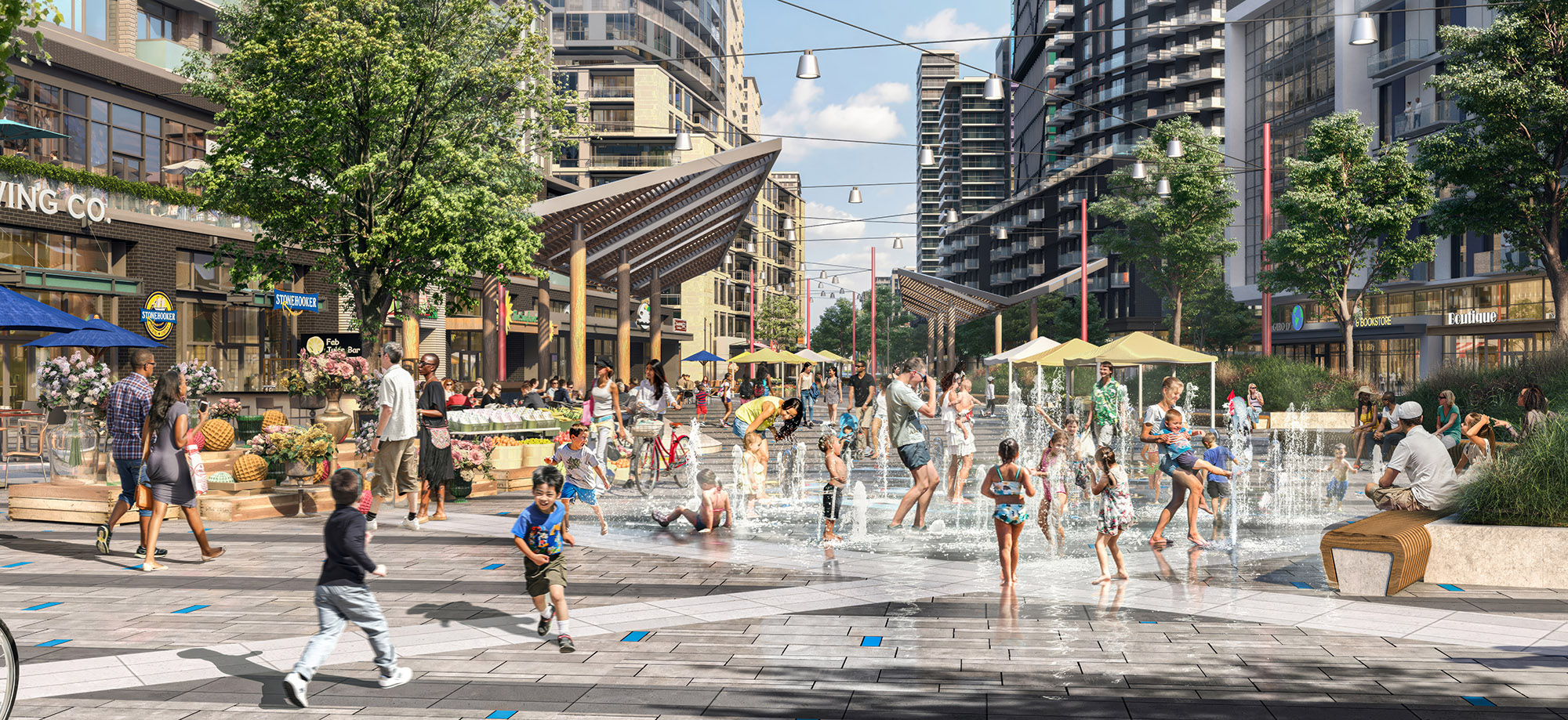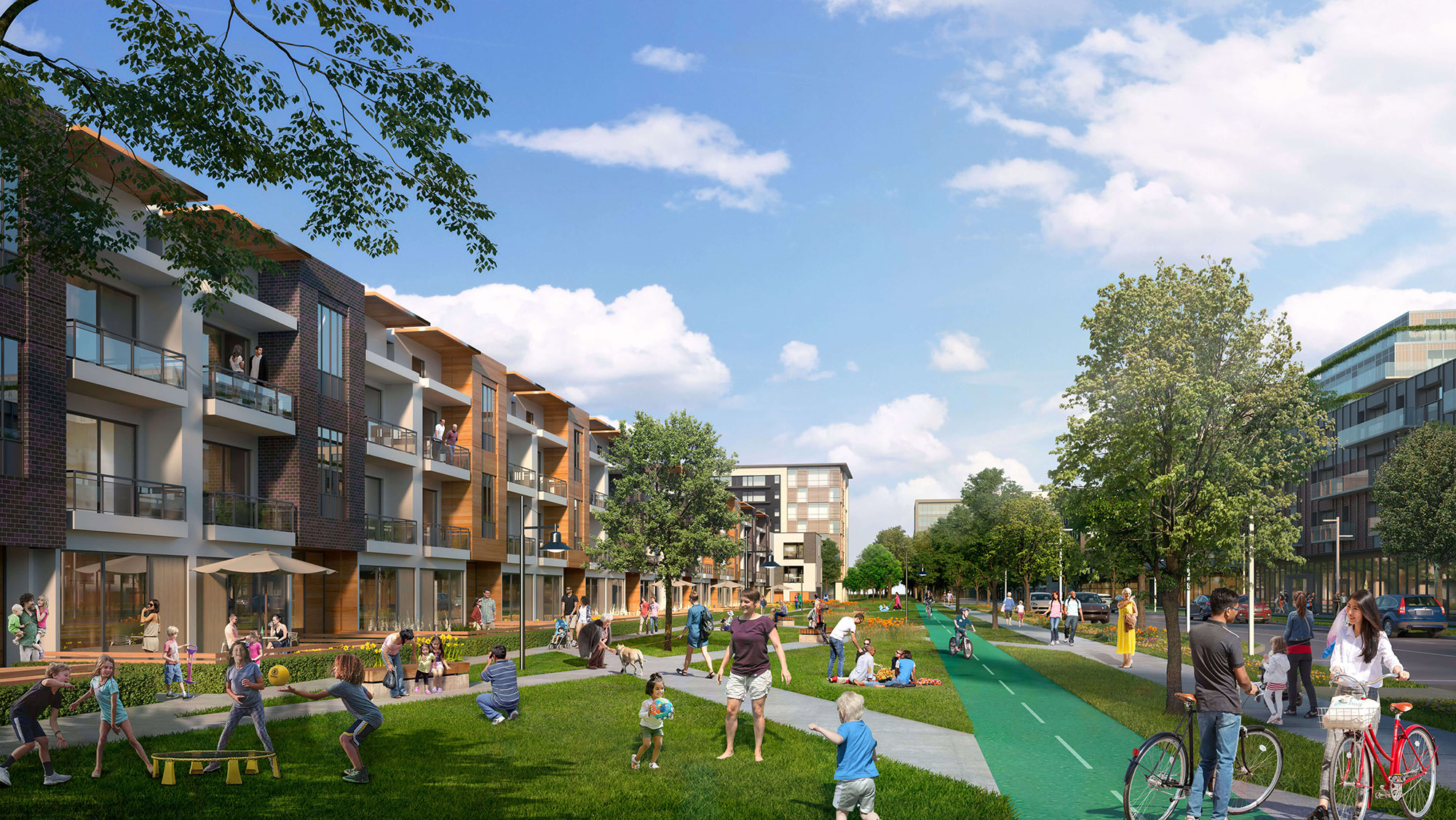COMMUNITY
The Power of Play: Building the Blueprint for a Happier Community

COMMUNITY

“Play is often associated with children — we see them playing on playgrounds or with toys and games — but we often overlook that play is an essential part of life for everyone… it just looks a little different as we age,” says Matthew Marsili, Senior Development Manager at Argo Development Corporation and a part of the Lakeview Community Partners Limited team.
Defined broadly, play happens whenever someone voluntarily takes part in an activity they find enjoyable and that involves some level of imagination, creativity, and spontaneity.
“For adults, play can look like someone enjoying a pick-up game of soccer with a friend or playing chess with a neighbour. For someone else, it could involve them walking through a park en route to an arts festival or sitting on a patio and engaging in some light-hearted conversation and fun. It’s something everyone needs more of — and it’s something we’re focused on integrating into the design plans for Lakeview Village.”
Matthew is right. The benefits of play — regardless of one’s age or stage of life — are well-documented. “For all of these reasons, it’s absolutely critical that people be given easy access to opportunities to play every day,” says Matthew.
For children, play is critical for cognitive development. It enhances brain structure and function, facilitating learning and problem-solving skills. Research by the Canadian Paediatric Society highlights that play promotes healthy brain development, aids in the mastery of complex social and cognitive skills, and fosters creativity. It holds the same benefits for seniors.
Engaging in playful activities helps to lower cortisol levels, the hormone associated with stress, and increases endorphins, which are natural mood lifters. According to a study published in the American Journal of Play, adults who regularly engage in playful activities report a 40% reduction in stress levels and a 30% increase in overall life satisfaction. A report by the National Institute for Play even found that engaging in regular play can reduce the risk of stress-related illnesses by up to 50%.
Activities that involve others — whether it’s a team sport, a board game, or a playful conversation — foster connection and improve social skills. According to one study, play is fundamental in maintaining strong social networks and improving interpersonal relationships, which are crucial for emotional well-being. The research indicates that individuals who engage in regular social play are 60% more likely to report having strong, supportive peers.
Engaging in playful activities provides a sense of joy and satisfaction that can counteract negative emotions. Play therapy — a psychological approach where play is used as a medium to help individuals express their feelings and resolve conflicts — is particularly effective in treating mental health issues in children and adults. Studies indicate that play therapy can reduce symptoms of depression by up to 45% and anxiety by up to 50%.

So how can developers go about cultivating a community where play is commonplace? “You have to design with play and a variety of other things in mind,” says Matthew. “You need to build well-lit streets so people feel safe being out and about. You need to build for active transportation so people don’t have to hop in their car or travel too far to enjoy activities; we want folks to be able to get a coffee with family around the corner from their home. You need to activate green and blue spaces. It’s about building in an integrated way with the goal of creating a better lifestyle for everyone.”

Living in an urban environment might seem to limit opportunities for play, but with a little creativity, there can be playgrounds for both children and adults. For example, urban planners from around the world are finally starting to incorporate playgrounds, sports facilities, and unique recreational spaces into city designs. Following the lead of some of the most historically celebrated park designs — like Central Park in New York City which spans over 840 acres — more and more green spaces are beginning to feature play areas, sports fields, and scenic spaces for leisurely activities. Similarly, Hyde Park in London offers over 350 acres of recreational space, including boating, cycling, and various sports facilities.” Lakeview Village’s waterfront will offer similar opportunities, says Matthew.

Communities often host a variety of events such as street fairs, festivals, and cultural events that encourage playful interactions. These events, Matthew notes, provide a platform for social play and community engagement, fostering a sense of belonging and fun. For instance, the annual Notting Hill Carnival in London attracts over a million visitors and features music, dancing, and performances that encourage playful participation. At Lakeview Village, many of these events will take place in Lakeview Square or alongside Lake Ontario on the Pier, Canada’s longest freshwater pier.

Joining clubs or groups centered around a particular interest or hobby is another great way to incorporate play into daily life. Whether it’s a sports team, a dance class, or a book club, these activities provide a structured way to engage in playful activities and meet like-minded individuals. According to the Sports & Fitness Industry Association, participation in recreational sports leagues in urban areas has increased by 20% over the past decade, reflecting a growing trend towards organized play.”

Some cities have taken innovative approaches to incorporate play into urban life. For instance, the High Line in New York City is a transformed elevated railway track turned into a public park that features art installations, green spaces, and areas designed for play. The High Line attracts over eight million visitors annually, offering a unique urban play experience. Similarly, citywide bike-sharing programs, such as Vélib’ in Paris, encourage residents to explore their city in a playful and active way, with over 20,000 bikes available across the city. Not only do these public realm experiences bring play to a community, they’ve brought them economic prosperity and new opportunities.

“At Lakeview Village, we know that how people play will be different for everyone, but we’re working hard to incorporate as many opportunities for fun into every facet of the community from the Pier and Lakeview Square to our many, many acres of green space and waterfront facing Lake Ontario,” Matthew says. “What we’re developing will not only create safe spaces to play, it will foster the emotions that make people want to get together as a community. Everyone will feel welcome. It will be a place where people can not only age in place, they’ll be able to remain young at heart.”